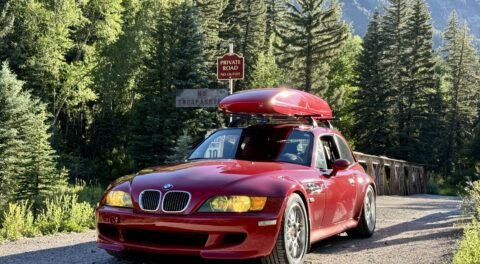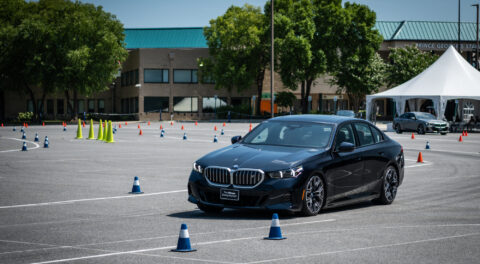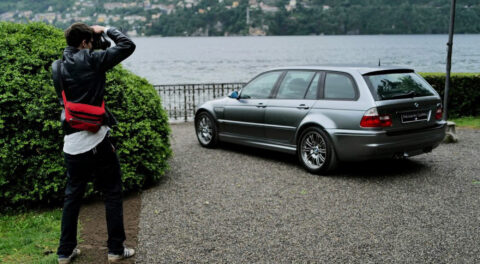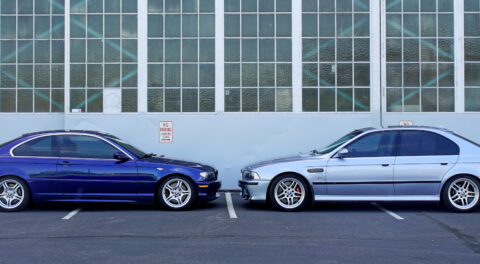Went shopping—casually—for a replacement for our ’11 X5 last weekend. Maybe upgrade is the better word; the Gray Whale lacks a couple of options, and it’s just been feeling a little shabby lately. But it doesn’t require replacement; the maintenance is up to date on our E70, and I’m strategically ignoring* a couple of stored codes, so it doesn’t bother me to keep driving it. On the contrary: It’s fun!

The turbocharged diesel three-liter in the X5 is a nice match for our local roads—if the curves are gentle, everybody’s going fifteen over—and it’s a nice match for our local hills. The M57 engine is a robust and happy mill if you keep it busy, so I dutifully climb the eight-mile hills at 3/4 throttle, watching the engine temperature climb to 93ºC or so while it sounds like a purring mountain lion. On the other hand, its emissions equipment is… extensive, and faults in that equipment are its bane. Diagnosing problems at home usually goes like this:
- read codes.
- read Internet.
- perform a test (results inconclusive).
- read more Internet.
- select the “most likely” bad component and order one, install it, and we’re good—for now.
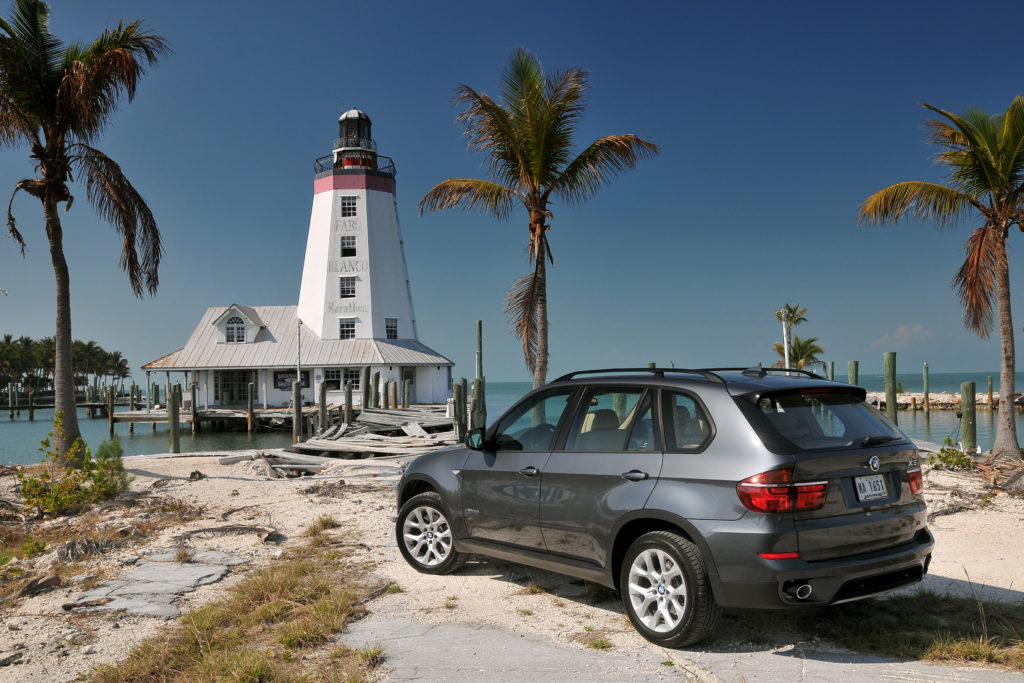
Despite these trials, the X535d has charmed me. I don’t care if the redline’s less than 5,000, the torque makes me giggle. And the instrument cluster’s range estimates just after fill-up (in the neighborhood of 600 miles) remind me what a fine thing efficiency is. But she is above a hundred thou, now, and the expensive components on BMW’s “extended warranty” list don’t cover everything implicated by those codes I’m ignoring.
So…maybe we should upgrade? (Said hopefully to life partner while appearing reluctant or at least uncertain).
“Well, what would we get?”
Let’s see, let’s see… Cayenne plug-in hybrid? With a blown V6 as a base, the electric half just pours the gravy. But it weighs more than my diesel: Bah. Perhaps an X6? They can actually be found in colors other than grayscale, and while more expensive than the X5 new, they seem to have a softer value in the used market. (Somewhere in there is a column about car types and their audiences, and how different the new and used audiences are. Or how similar.) But the X6s didn’t come in diesel flavors. And then I realized that I really, really like that cheerful lump up front.
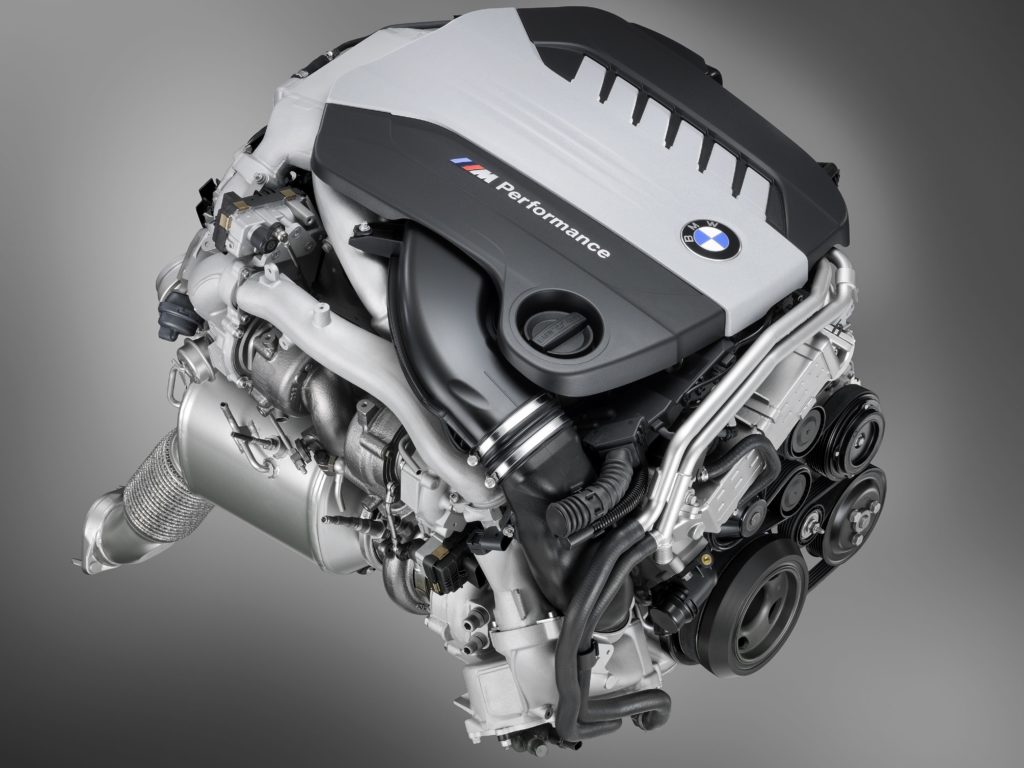
The BMW N57S. You know, the one with 546 pound-feet of torque.
So what if we just fast-forward in the X5 timeline? BMW sold F15 X5s with diesels ’til the end of that model’s run in 2018. The M57 engine was superseded by the N57, still a turbocharged intercooled six, but every detail beneath that upshifted. The transmission has eight gears. The human-interface technology is roughly two generations newer. The front-end styling is the last gasp of a tapered nose, and the kidney grilles are only moderately swollen. Stereo choices are Harman/Kardon (mostly) and Bang & Olufsen (rare), both nicer than the BMW Professional system in the 2011 model. Wheels have continued their regrettable march upward in diameter (perhaps I just regret the lower-and-lower sidewalls on tires), now a minimum of nineteen inches. Brakes are even more capable than the E70’s—
Wait, no, that must be wrong. Smaller brakes? Inconceivable!
But a fact, nonetheless: The 2017 X535d had lesser brakes than the 2011. The earlier X5 sports front rotors that are 348mm in diameter and 30mm thick; the 2017s I’ve been looking at are at 332mm with the same thickness. In back, there’s no similar shrinkage, a small blessing we shall count.
I made a stab at rationalizing the reduction. “The newer X5 is a couple of hundred pounds lighter (for equivalent equipment). I’m sure that the TUV made sure that the braking was enough. This is fine.”
But rationalization failed. This is a hangup, for real. You see, I like big brakes, and I cannot lie. I like ’em round and big. Hell, I put 335xi brakes on our 328xi wagon and have zero regrets.
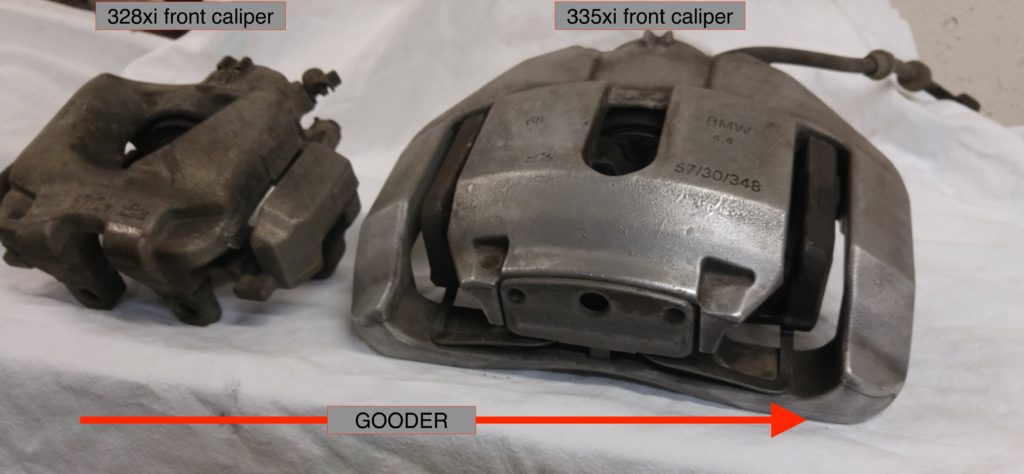

Some people worry about tires filling out fender wells; I worry about brake discs covering the dust shields. The 2017’s discs don’t, and the sight makes me uneasy.
Furtively, I do web searches for big-brake kits.
It does appear that alternatives exist, including a parts-bin upgrade like the one I used on our wagon. Fitting the front rotors from the V8 X5 brings you to 385 mm diameter and 36 mm thickness. Now we’re talking! If we do upgrade our SAV to the newer X5, I’ll probably wait until the OEM units are burned up to embiggen ’em. There is, after all, a possibility that some Munich Engineering Magic makes the “there’s no substitute for swept area” maxim fail to obtain here. But I am skeptical.
I guess I’m saying that I believe size matters, and that I have doubts when I work with undersized components. Very likely this is a personal issue, a mental weakness, a mild bout of neurosis. But as everything I believe might just be colors splashed on the wall of my mind, this compulsion is no more nor less real than any other. I will deny that I’m compensating until somebody proves it.—Marinus Damm
___________________________
*strategically ignoring codes involves a couple of caveats:
- First, if the code is one which would block “regeneration,” then it must be fixed immediately to protect the diesel-particulate filter.
- Second, if the code suggests a common fault tied to faulty hardware—and if BMW has recognized the commonality and extended the warranty on that hardware—then perhaps we should wait until near the expiration of that super-warranty.
- Third, when you have no idea what might be behind the illuminated Check Engine light even after you’ve read the codes, you could just wait for whatever it is to fail for good.


